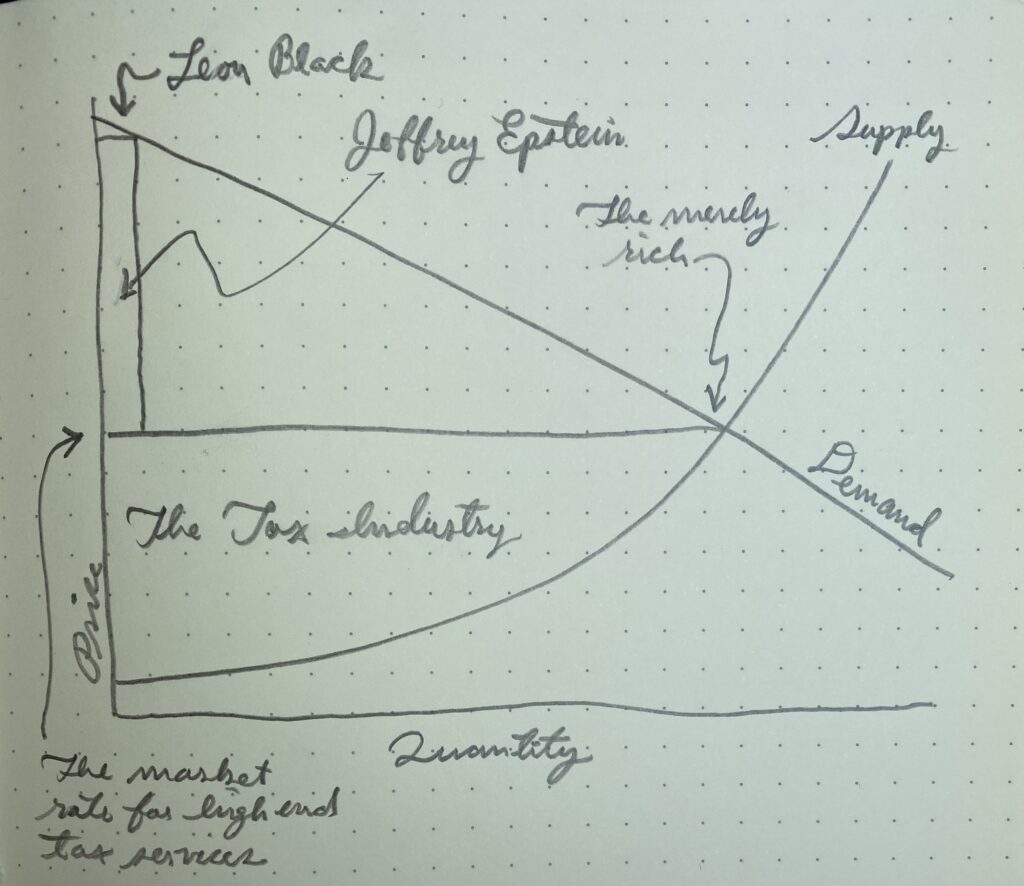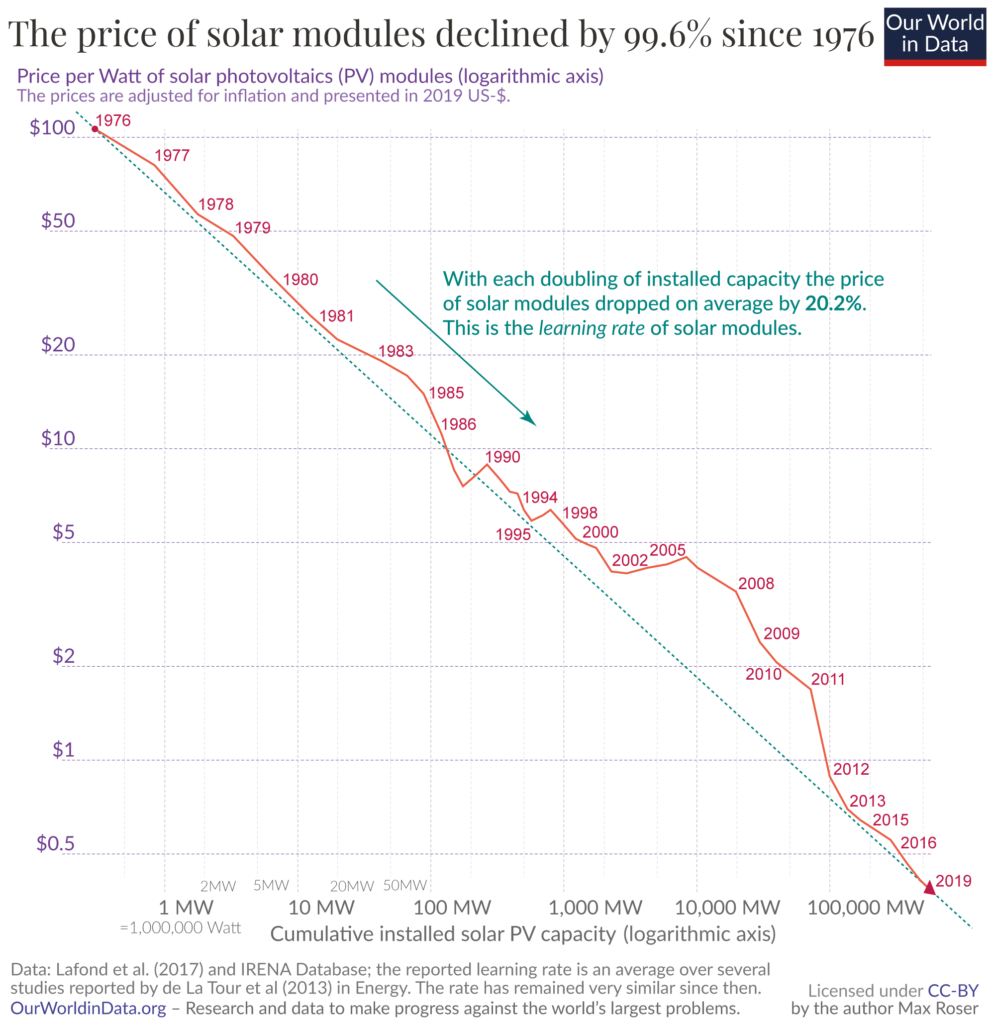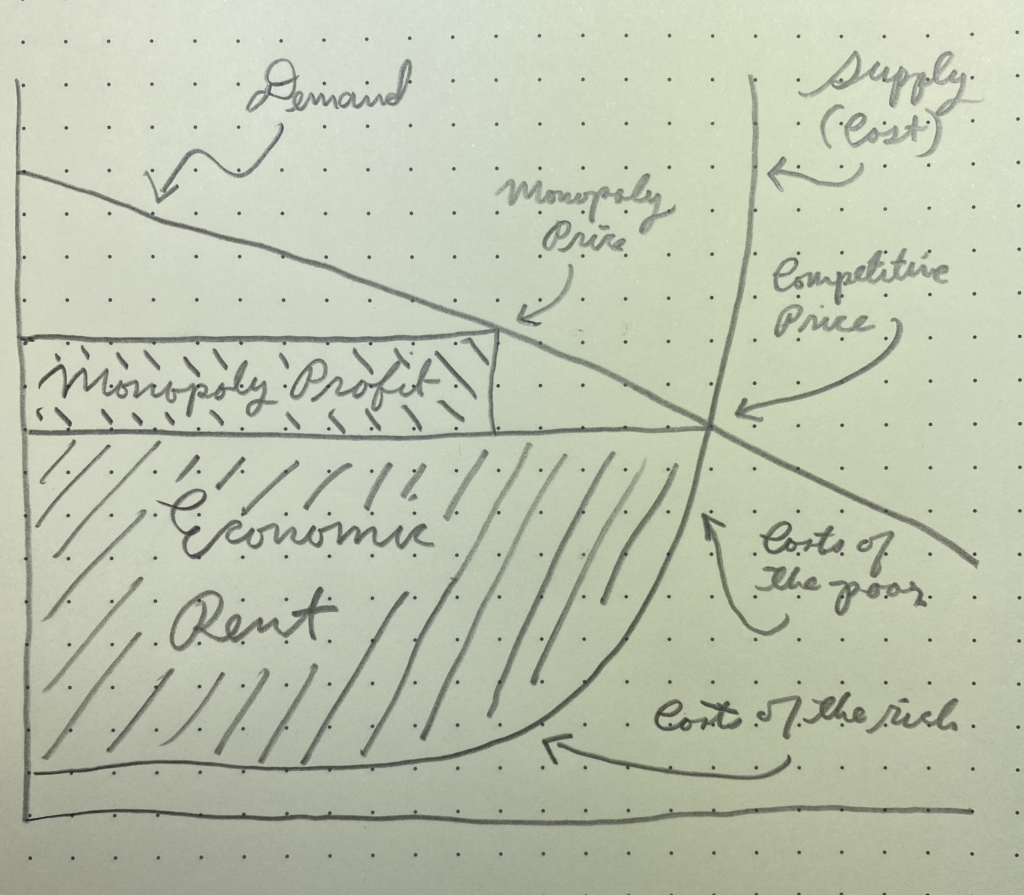I, too, have been enamored of sports metaphors in antitrust. How can the level playing field not convince?
Two wrestlers meet on the floor. If it is uphill for one and downhill for the other, neither will excel. One will find it too easy to win, and so train little. The other will find it too hard to win, and so train little. So, too, in business. If Amazon stands at the top of the hill, because Amazon owns the floor and has chosen to put itself there, then it will do little to improve itself, for it can too easily win against the third-party sellers that it has placed at the bottom of the hill.
But the level playing field is but the pretense of fairness. A way, only, of highlighting a much greater unfairness that we in fact revere. For when the athletes meet, one wins, and not, we like to think, by chance, but because one is better. And why is that one better? Forsooth, because that one does not compete on a level playing field at all. His muscles are better developed. He has better stamina. He is a quicker thinker. He has the focus of mind required to train more. His intuition is better. He has a better spatial sense. And so on. That is, he has an advantage that he does not share with his opponent.
Let us say it is his muscles. In muscle space the field is not level; he stands at the top. And he self-preferences, for he does not, say, starve himself for a week before the bout in order to waste his muscles a bit and thereby level the playing field in muscle space. No! He seizes his advantage. He uses it to win—inevitably to win—and despite this inevitability he feels that he deserves this win, that it is an expression of who he is and not of the tilt of a field.
Why should he feel that his victory is about him given that it was not earned on a truly level playing field? Because it is not a complete leveling that we really seek in any contest. What we seek is to reveal the character of a field that we value. Once we have isolated that field, we glory in whatever tilt we find to it.
If what interests us is who is the strongest, then we want to level the irrelevant fields, and then watch which way the parties slide on the field of strength. If it is the strength of wrestlers, then we level the floor, so that we can better perceive the tilt in their relative strengths.
We can therefore only really object to self-preferencing if the particular instance of self-preferencing at issue relates to a field that we do not think important. We cannot oppose self-preferencing itself, for to do that is to oppose all tilts of field, which is to say, to oppose excellence. It is to insist that no one win the match, or equivalently, that it only ever be determined by a flip of the coin.
(You ask me why the strong massacre the weak in war and want to celebrate it. What challenge is there in that, you say? I say: what challenge was there in your successes, dear reader, any of them, apart from the anxiety you may have felt over whether you would succeed, an anxiety born of your ignorance regarding where your strengths lay? Do you not massacre your opponents too, and call it achievement?)
We can oppose Amazon’s self-preferencing only if it lies in a space that we think irrelevant. If, instead, it reflects a superiority that we desire—if, in the commercial context, it is a superiority in product space, meaning that the self-preferencing delivers better products to consumers—then we must celebrate Amazon’s blood-letting.
We might legitimately say that in giving priority to ads for its own products, Amazon is tilting a field about which we do not care much—the field of marketing—and that prevents the tilt of a different field, that of product quality, from determining the outcome of the game, as we would want it to do.
But we might also conclude that on an ecommerce platform rife with unregulated and unsafe products, the field of information about products should be tilted in favor of Amazon, because then, at least, it is easier for consumers to find the products that Amazon actually stands behind: its own, for which Amazon can be sued if the products turn out to be defective.
So I do not see how the sports metaphor ultimately adds anything to antitrust analysis. It certainly does not teach that the heart of antitrust is fairness, the rules of the game. It merely takes us back to the question that is the heart of all antitrust analysis: does the slaying of competitors improve the product entire, including our ability to find it?


